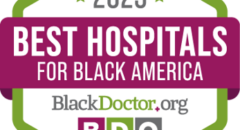
You would think that eating fish would be a healthier choice when it deciding what to eat. But for one loving mother, it turned out to be a life and death situation that no one saw coming.
A California mother is now a quadruple amputee after contracting a bacterial infection that seems to have come from undercooked fish.
After cooking and eating tilapia purchased from a local market in July, Laura Barajas, 40, fell ill almost immediately. She was diagnosed with the virulent Vibrio vulnificus, often called the “flesh-eating bacteria,” according to a GoFundMe campaign set up by her friend, Anna Messina.
“She almost lost her life. She was on a respirator,” Messina told KRON-4. “They put her into a medically induced coma. Her fingers were black, her feet were black, her bottom lip was black. She had complete sepsis and her kidneys were failing.”
Barajas, who has a 6-year-old son, spent a month in the hospital before “all four of [her] limbs had to be removed in order to save her life,” according to the GoFundMe.
According to the National Institutes of Health, Vibrio vulnificus populates coastal waters around the world, where it exists freely or becomes concentrated in filter feeding mollusks. It also causes rapid and life-threatening sepsis and wound infections in humans.
The bacterium gains entrance to the human host through consumption of contaminated water or food, particularly raw or undercooked oysters and other seafood. Alternatively, infection occurs through open wounds that contact seawater or shellfish containing the bacterium.
V. vulnificus is responsible for the vast majority of reported deaths associated with seafood consumption in the United States. Patients developing sepsis through oral ingestion of the bacterium overwhelmingly have an underlying predisposing health condition such as liver disease, AIDS, diabetes, hemachromatosis, cancer, or a compromised immune system. Infection of wounds occurs typically during swimming, fishing, or handling of seafood.
Should You Be Worried?
Before you start worrying, here's what you need to know:
Symptoms
- Vibrio vulnificus infections can cause gastroenteritis, with symptoms such as diarrhea, vomiting, abdominal pain, and fever. While these symptoms are typically mild and self-limiting in healthy individuals, they can be more severe in those with compromised immune systems.
- In severe cases, Vibrio vulnificus infections can lead to bloodstream infections (septicemia) and severe soft tissue infections.
The bacterium can cause necrotizing fasciitis, a flesh-eating disease that destroys the skin, muscles, and underlying tissues, leading to tissue death. - Infections can progress rapidly, with symptoms worsening within hours or days.
People that are High-Risk
- Certain individuals are at greater risk of developing severe Vibrio vulnificus infections. These include people with chronic liver disease, weakened immune systems (e.g., due to HIV/AIDS, cancer treatment, or immune-suppressing medications), and those with underlying health conditions.
- The elderly are also more susceptible to severe infections.
How to Prevent It
To reduce the risk of Vibrio vulnificus infection, experts agree to:
- Avoid consuming raw or undercooked seafood, especially if you have a compromised immune system. The FDA recommends an internal temperature of 145 degrees F for cooked fish.
- If you have open wounds or cuts, avoid contact with seawater or brackish water, particularly in areas known for Vibrio vulnificus presence.
- Practice good wound care and hygiene when dealing with marine environments.
According to the GoFundMe, the family is still in need of help:









